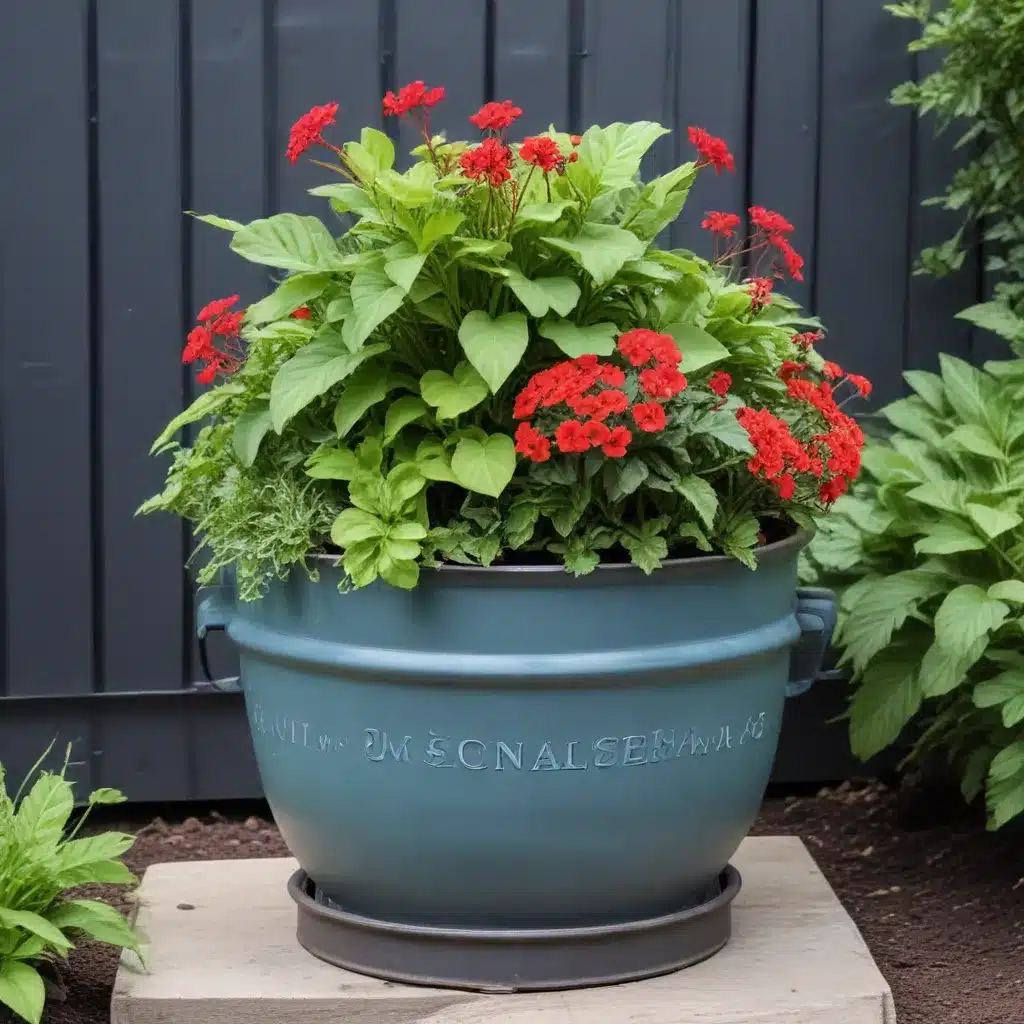
Being a farm educator at Crooked Pines Farm, I’m often asked about the best ways to grow vegetables, herbs, and other edible plants, even for those with limited outdoor space. Container gardening has become increasingly popular as more people discover the joys of growing their own fresh produce, right at home.
Whether you have a small patio, a sunny windowsill, or just a few spare pots, you can create a thriving container garden that provides an abundance of flavorful, nutrient-dense foods for your family. In this article, we’ll explore the fundamentals of successful container gardening, from selecting the right containers and soil to choosing the best plant varieties for your space.
Fundamentals of Container Gardening
The key to a bountiful container garden starts with understanding the basics. Let’s dive into the essential elements that will set your plants up for success.
Selecting the Right Containers
When it comes to container gardening, size matters. Choose containers that are at least 6 inches deep and have adequate drainage holes to allow excess water to escape. This will prevent your plants from sitting in soggy soil, which can lead to root rot and other issues.
Opt for natural, food-safe materials like terra cotta, cedar, or stainless steel. These materials not only look great, but they also help regulate soil moisture and temperature. Avoid plastic containers, as they can leach harmful chemicals into the soil.
Potting Soil and Drainage
Use a high-quality, well-draining potting mix specifically formulated for container gardening. Regular garden soil can become compacted and inhibit growth in the confines of a pot. Look for mixes that contain compost, perlite, or vermiculite to improve aeration and water retention.
Remember, proper drainage is crucial. If your container doesn’t have enough drainage holes, consider adding some yourself or lining the bottom with a layer of gravel or crushed stone to allow excess moisture to escape.
Choosing Plants for Containers
When selecting plants for your container garden, opt for compact, bush-type, or trailing varieties that thrive in limited space. Determinate tomatoes, dwarf vegetables, herbs, and edible flowers are all excellent choices.
Avoid planting overly vigorous or large-growing plants that may quickly outgrow their confines. Instead, mix and match complementary species, such as tomatoes, basil, and marigolds, to create a visually appealing and productive container garden.
Designing Your Container Garden
Once you have the fundamentals in place, it’s time to start thinking about the design and layout of your container garden. This is where you can get creative and tailor your space to your unique needs and preferences.
Layout and Arrangement
Consider the available sunlight in your chosen spot and group plants with similar light requirements together. Arrange taller plants in the back or center of your container, with shorter, trailing varieties spilling over the edges.
Vertical gardening techniques, such as trellises or cages, can help maximize your growing space by allowing you to grow vining or climbing plants upwards.
Mixing Plant Varieties
Diversity is key in a thriving container garden. Combine different plant types, such as vegetables, herbs, and flowers, to create a visually stunning and functionally beneficial arrangement.
Companion planting, where you strategically place plants that benefit each other, can help deter pests, improve pollination, and enhance the overall health of your garden.
Vertical Gardening Techniques
Embrace the vertical dimension of your container garden by incorporating trellises, cages, or stakes to support climbing or vining plants, such as tomatoes, cucumbers, or pole beans. This not only saves valuable ground space but also allows you to grow a wider variety of crops.
Planting and Transplanting
With your containers and design in place, it’s time to get your hands dirty and start planting. Proper techniques will ensure your plants thrive from the moment they’re introduced to their new home.
Preparing Containers
Before planting, thoroughly mix in a balanced, slow-release fertilizer to the potting mix to provide a steady supply of essential nutrients. Moisten the soil and let it drain before adding your plants.
Transplanting Seedlings
When transplanting seedlings or young plants, handle them gently by the leaves or stems, avoiding the delicate root systems. Carefully loosen the roots and place the plant in the center of the container, ensuring the soil line is at the same level as it was in the previous container.
Proper Planting Techniques
Plant at the same depth as the original container, and gently firm the soil around the base of the plant to eliminate air pockets. Water thoroughly after planting to settle the soil and provide a good start for your new additions.
Maintaining a Thriving Container Garden
Keeping your container garden healthy and productive requires regular care and attention. Mastering these maintenance tasks will ensure a bountiful harvest throughout the growing season.
Watering and Moisture Management
Container plants are more susceptible to drying out than their in-ground counterparts, so check the soil daily and water when the top inch or two begins to dry out. Avoid letting the soil become completely dry or overly saturated.
Fertilizing and Nutrient Requirements
Container plants quickly deplete the available nutrients in the soil, so regular fertilization is essential. Apply a balanced, water-soluble fertilizer every two to four weeks, or use a slow-release granular fertilizer at the beginning of the season.
Pruning and Deadheading
Regularly prune your plants to encourage bushy growth and prevent leggy, unproductive plants. Deadhead spent flowers to direct the plant’s energy into fruit or vegetable production rather than seed formation.
By following these best practices for container gardening, you’ll be well on your way to creating a thriving, productive, and visually stunning edible garden, right at home. Remember, the key to successful container gardening is observation, experimentation, and a willingness to learn from your experiences. Happy growing!
If you’re looking for more farm-related content, be sure to check out Crooked Pines Farm’s website for a wealth of information on nature exploration, educational tips for kids, gardening insights, farm-to-table recipes, DIY crafts, family fun activities, seasonal events, and farm life chronicles.


